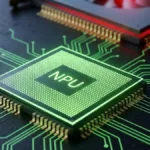Researchers have developed a transistor made from organic materials found in the human body.

The Tel Aviv University team says its protein-based transistors could become the basis of a new generation of nano-sized technologies that are both flexible and biodegradable.
Working with blood, milk, and mucus proteins, they say they’ve succeeded in taking the first step towards biodegradable display screens, and aim to use the same method to develop entire electronic devices.
One of the problems of using silicon as a semiconductor is that it needs to be created with a top-down approach, with manufacturers starting with a sheet of silicon and carving it into the shape that is needed. This method limits the capabilities of transistors when it comes to factors such as size and flexibility.
But the TAU researchers found that when they applied various combinations of blood, milk, and mucus proteins to any base material, the molecules self-assembled to create a semi-conducting film on a nano-scale. In the case of blood protein, for example, the film is approximately four nanometers high, and the latest version is 18 nanometers.
Together, the three different kinds of proteins create a complete circuit with electronic and optical capabilities. Blood protein has the ability to absorb oxygen, Mentovich says, which permits the doping of semi-conductors with specific chemicals in order to create specific technological properties.
Milk proteins, known for their strength in difficult environments, form the fibers which are the building blocks of the transistors, while the mucosal proteins have the ability to keep red, green and, blue fluorescent dyes separate, together creating the white light emission that is necessary for advanced optics.
The team reckons that transistors built from these proteins could be ideal for smaller, flexible devices that are made out of plastic rather than silicon and could lead to a new range of flexible technologies, such as screens, cell phones and tablets, biosensors and microprocessor chips.
Just as significant, they say, they’d be biodegradable.






